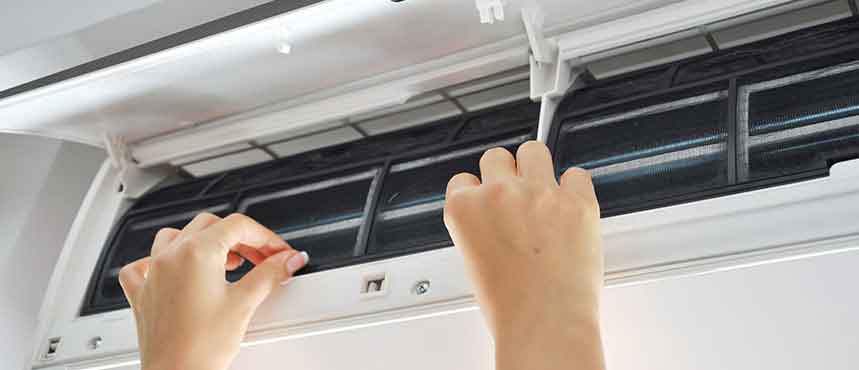A central air conditioner relies on ductwork and registers (openings) to distribute cool air all-around your home. Essentially, the system sucks air in from outside, cools it, and then pushes it throughout the home via the ductwork.
There are two types of central AC units: split-system and bundled. A split system comprises an outside unit and an interior cabinet, while the packaged variety resides in a cabinet either outdoors or on the roof of your home. Packaged units are the ones that may also act as a heater with the installation of electric heating coils or a gas furnace.
If your property lacks ductwork to accommodate your new system, you’ll have to look at some improvements to retrofit an AC to your house. However, if you’re replacing an older unit with an updated and energy-efficient one, you might see a considerable improvement in your energy expenses.
Today’s units consume up to 50 percent less energy to operate than those created as little as ten years ago, making a modern unit a solid investment for most households. Of course, choosing the proper size system can also affect your energy expenditures, so purchasing a suitable system is vital.
Professionally Installed Central AC Systems Guide
Here’s more about having a professionally ducted air conditioning installation system, including the advantages and downsides.
Why You Should Hire Professional to Install Central AC System
While there are many jobs you can DIY properly, there are instances when it’s best to pay a professional to complete the work. Here are a few pros to having a licensed HVAC technician install and service your new AC system.
No Manual Labor Work
If you’re DIYing the work, you may be digging beneath your home, moving heavy pieces, prepping an installation site, pouring concrete, climbing on the roof, or any number of other strenuous duties. Hiring a professional eliminates the need for you to do anything other than sign off on the job and pay the fee.
No Paper Work
In addition to the physical difficulties of installing a new AC unit, many homeowners employ a professional so that they don’t have to bother about the paperwork part. In most regions, the local government requires permits for numerous home renovation projects, including repairing or installing large-scale appliances like house heating and cooling systems.
Contractors and HVAC specialists may secure the required permissions for you, making the task simpler about timeframes and having things done swiftly.
Professional Upkeep
With most new installs, HVAC specialists provide maintenance plans for these systems. If a business installs your new unit, they’re already familiar with it and can come back and check up on things anytime the homeowner needs it. Also, many installation packages include a specialized maintenance schedule to maintain your unit’s lifetime and safety.
Drawbacks of a Professionally Installed AC System
There are a few drawbacks to hiring out the AC installation job.
High Increasing Cost
Although your contractor may negotiate a reduced fee for your AC unit based on their brand and manufacturer ties, you will still pay labor expenses for the unit’s installation. You may also need to fund the pre-installation work, perhaps involving constructing a concrete slab or making adjustments to accommodate the new assembly on your roof. However, the expert installer will manage the technicalities of the process.
Tough To Find Reputable Company
For those homeowners who reside in more remote regions, it might be tough to locate a contractor that’s willing and able to travel to install a new central AC system. While rural life has many positives, getting stuff delivered and installed is not one of them!
DIY Central AC Systems
Here we’ll look at the perks and drawbacks to going the DIY route with your central AC system. It’s important to keep these things in mind when learning how to install central air conditioning yourself.
Follow Home Inside for more!
